Women in Business Q&A: Lamini Alpaca Accessories
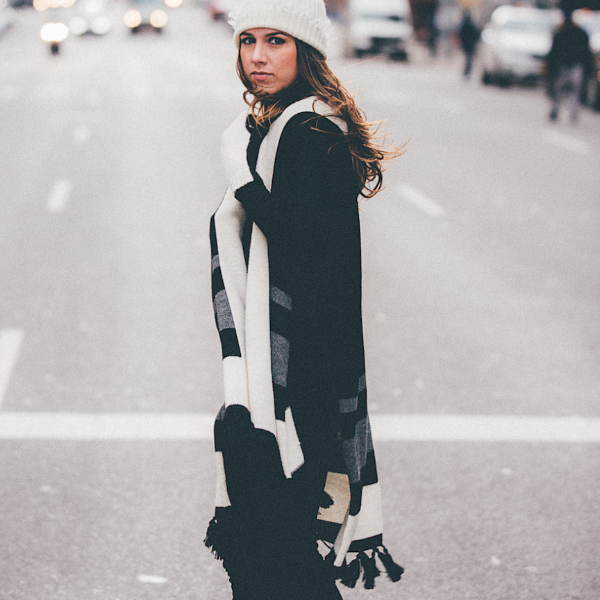
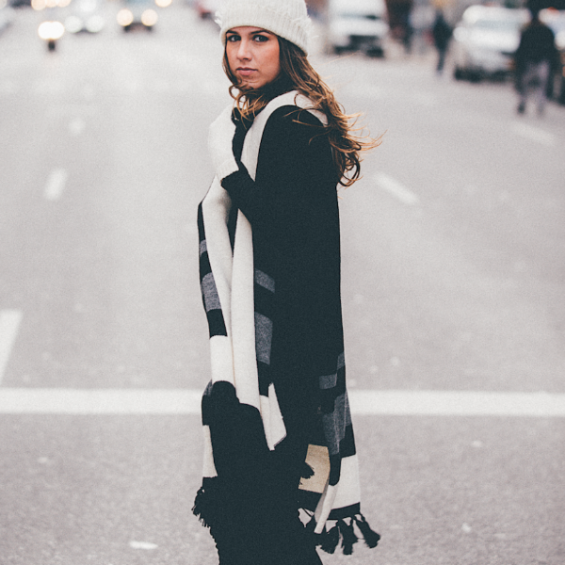
In 1533, when Francisco Pizzaro and his band of not-so-merry Spanish conquistadors captured Cuzco, Peru, they were so awestruck by the gold and silver masks, statues, and jewelry they uncovered that they failed to recognize the most treasured possessions of the Inca: fine textiles made from the soft, durable fiber of the alpaca.
The Inca, as it turned out, were genius weavers and textile makers who crafted everything from bridges to roofs, clothing, and rugs from fibers. Among the many textiles used as currency and given as rewards and gifts, “they wove a woolen fabric from the fleece of the alpaca, a small, slender member of the camel family, that was so soft and alluring it was prized above almost all else in the highland empire centered in what is now Peru.”
Fast-forward to modern times. Say the word alpaca, and most people will think of shapeless, crunchy-granola sweaters and fingerless gloves sold at craft fairs. But the founders of Lamini, a New York City–based alpaca accessories line, are out to demolish this perception. Lamini’s cozy beanies, scarves, headbands, turbans, and wraps are crafted by merging the millennia-based skill of Peruvian weavers with a modern aesthetic influenced by the Art Deco architecture of New York City to create functional, fashionable, eminently Instagram-able accessories.
Lamini’s founders, Vanessa Urenda, Paula Manrique, and Nancy Zauscher, all Fashion Institute of Technology grads, talked about the genesis of their company and how they’re connecting fashion and sustainability.
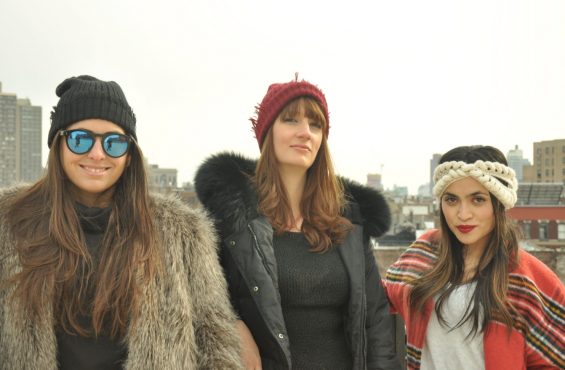
RC: How did you meet in grad school?
Nancy: When we first met to talk about our [thesis], Vanessa and Paula were already set on working together. They wanted to start something that would turn into a real business. I was a little hesitant. I’m from Colombia, and was really motivated to do something in Colombia—I’d worked in fashion consulting there. We realized we had a shared connection and heritage in Latin America, so we decided, “Let’s do something there.”
Paula: Initially when I approached Vanny, it was because my family has a factory in Peru. Although I loved working on the brand, it didn’t feel like my own. And we wanted to do something sustainable, because we knew the fashion industry is very polluting.
RC: How did you find your supply chain in Peru?
Paula: The Peruvian chamber of commerce was looking to promote the export of alpaca to the US. Eighty percent of alpaca is in the Peruvian Andes, so I was always very familiar with it. I had a contact from the previous brand I worked for, and they brought us to a trade show, so I was able to make contact with the chamber of commerce.
RC: What was the biggest stumbling block in working with alpaca?
Paula: There’s definitely alpaca in the US, but what’s imported is very basic/classic or artisanal. There’s not a lot of product that’s fashionable.
Nancy: In our research, we also found that even in the ’70s and ’80s, alpaca was much more popular in the US. Chinese manufacturers started to buy the raw fiber to process, but they ended up mixing it with other kinds of wool to meet the demand. It really affected the quality—it ended up in a lot of sweaters that weren’t high quality. That affected alpaca’s cachet.
Paula: They sometimes used less than 10 percent of alpaca and branded it as alpaca. The consumer would use it, but it didn’t have the luxurious properties it claimed, and it wasn’t hypoallergenic or was itchy. It created a negative in the consumer’s mind. All our products are 100 percent baby alpaca, or are occasionally blended with silk, but no other wool fiber.
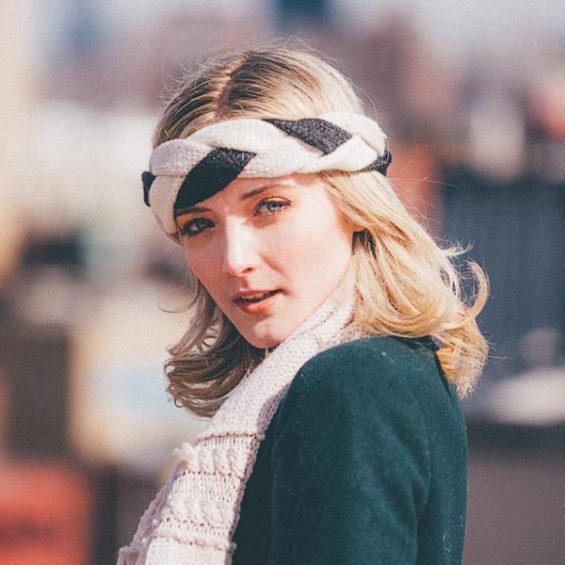
RC: What makes alpaca fiber healthier and better for the earth?
Paula: Alpaca fibers don’t contain lanolin, like merino wool or cashmere. It’s a common allergen. Removing the lanolin requires a lot of chemicals and water and creates a lot of waste. Alpaca fiber requires a lot less processing, and it’s naturally hypoallergenic.
RC: When did you know you were on to a viable business idea with Lamini?
Nancy: From the start, we wanted to have a thesis that was going to turn into a good business. We studied alpaca and the supply chain in Peru, and Paula and Vanessa went there to look at different sourcing opportunities. We also conducted a market survey in the US to understand what people thought or knew about alpaca. We studied how much alpaca wool was imported versus other types of wool. That’s when we saw we had a really big opportunity to position it as a more fashionable brand.
RC: Did you fund it yourselves or take on investors?
Paula: We funded almost everything ourselves. The Peruvian chamber gave us a small investment for our Kickstarter campaign.
RC: What steps did you follow for getting the brand ready for “prime time”?
Nancy: It was a long process because we were also building our thesis. Having the thesis deadline really pushed us! After we decided to work with alpaca, we did our market research. Then we worked with mentors to build the brand story…. We had a really fast launch last December, when we did our thesis. By then we already had a twelve-piece collection with small quantities in inventory for each item. This was us working at night, over the weekends, to pull everything together.
Paula: We also did a market survey and tested three different brand aesthetics to see what resonated with people. We wanted to make sure we were filling a void in the market, and creating a balance between design and sustainability. We worked with a graphic designer and brand strategist on the visual branding, and to break out the six characteristics of alpaca. We include this on a card in all of our packaging so consumers know why alpaca and our products are special.
RC: Are there any other businesses you looked to for inspiration?
Paula: We all really like Everlane, Reformation, Patagonia.
Nancy: Reformation, definitely. We really looked them to because it’s a very cool brand and they’re sustainable, but they do it in a very cool, modern way and communicate it in a fun way.
RC: Why did you take the Kickstarter approach? Did it change how you ended up working with Nordstrom and Anthropologie?
Nancy: We’re very fortunate that we got into these amazing stores for our first season. But they’re still testing out Lamini because we’re new. And with Nordstrom, it’s drop ship: they’re not buying anything; we finance our own inventory. We really needed to get some financial support for our production. We also want to focus on our own e-commerce, because that’s really the future.
Paula: We’re only approaching stores that are in alignment with our brand and that attend to our end consumer. Anthropologie, for example, does a lot with sustainability.
The Kickstarter campaign was only live for thirty days. It turned out to be a great way to get feedback throughout the campaign. The products left over from the campaign moved to our website.
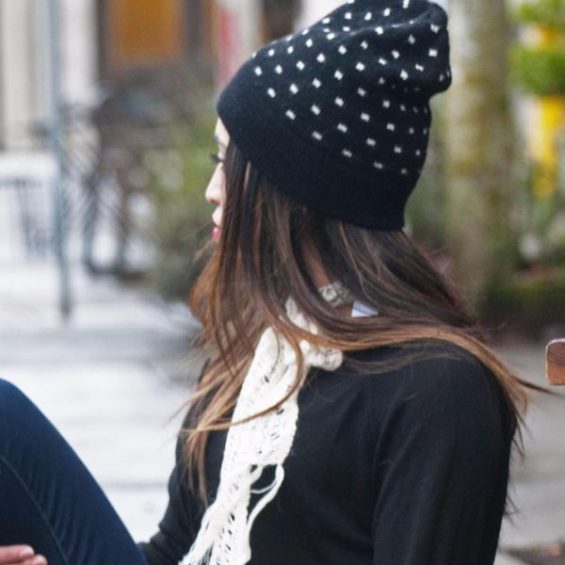
RC: What’s the plan for the Lamini e-commerce website?
Paula: We want to create content that is always interesting to the consumer. We’d like to start with content like how to style the product in different ways, how versatile it is, and how it can transcend trends. Then show people how it’s made, how to take care of it. If you take care of your alpaca accessories, they’ll last a really long time. I have an alpaca scarf from back home. It’s just a basic scarf, but I’ve had it for as long as I can remember.
RC: The wool industry has taken heat for unethical treatment of animals. How is alpaca different?
Nancy: We want people to understand that alpacas are these very friendly animals that have lived in Peruvian Andes for centuries. The Inca Indians considered them a gift from the gods, because the animal has provided them with milk and wool throughout time. It’s a very important animal culturally for the Peruvian people, and they’ve created a special bond with the animals.
Not only are they not harmed in the shearing process, but they’re fairly treated and the fiber isn’t mass produced. These are small family farms with about one to two dozen alpacas, and they form co-ops to sell the wool to manufacturing or to the spinners. The women in the families are the ones who care for the animals, while the men do other farm activities. It’s a very women-focused industry. That’s important to us, as well.
RC: How has your business process changed?
Paula: It’s based on learning. We started with alpaca, and we want to decentralize production from China. But it’s a cold-weather fiber, so we know we need to expand into other fibers eventually. We’ll look at other fibers that are innate to specific countries—for example, organic cotton from Peru.
Vanessa: We’re changing our design and making sure our merchandising plan is much more cohesive. And we’re better understanding what our core pieces are—what a buyer from a wholesale distribution likes, and what an end consumer likes.
RC: Who is your customer? Do you think it’s possible to appeal to both sustainability-minded and fast-fashion consumers?
Paula: Our demographic is probably from 27 up to 60, with the core customer age 30 to 45. Millennial consumers really care about a brand story that offers transparency about the supply chain and how product is made, so as the millennial consumer ages and increases her income, she’ll become a core customer.
Vanessa: I feel like the fast-fashion consumer is also our customer, though the core customer is someone who values sustainability. Today, the modern shopper has so much variety and so many choices in their closet. Our customer buys from Zara, a department store, a niche designer online, and also Lamini. Our customer enjoys variety and really likes that high and low pricing. There’s an intersection of both worlds.
Paula: If we can introduce a sustainable piece into the closet of someone who mostly buys fast fashion, that’s a win for us. Our pieces are more versatile and can be styled in a lot of different ways, so we hope we can change the mind-set of that consumer over time.
RC: What has been your approach to marketing so far?
Vanessa: We’ve reached out to influencers and sent out product, and we’re receiving great feedback from them. We’re also focusing on collecting e-mails for our newsletter.
Paula: Since we’ve had a very limited budget, we’ve mostly worked with paid campaigns on Facebook and Instagram—we feel like the latter, especially, is our audience. We also did some paid search that drove traffic to our Kickstarter.
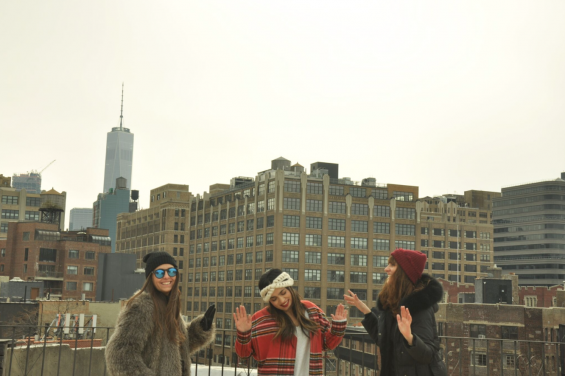
RC: You’re doing all of this while still working full-time jobs. How do you do it?
Paula: We’re able to manage this because we’ve all worked and have experience in the fashion industry and are able to distribute the workload. We also complement each other’s skills. When we have days that feel like too much, we have each other as support. If one person has a tough week or needs to meet a deadline, the others can cover for her.
Vanessa: The grad school experience gave us a shared path, and helps us leverage relationships with mentors at FIT and companies we’ve met and worked with along the way. This has helped a lot.
Nancy: I had already had my own business, Vanessa had been a partner in a small brand, and Paula’s family has a long history of entrepreneurship. We knew it wasn’t going to be easy from the start. I feel like it will always be a challenge, but we work really well together to overcome it.
RC: What have you enjoyed the most about starting and running Lamini?
Nancy: Seeing our product in Anthropologie. Everything that led up to that was challenging, but then you see a milestone like this, or our Kickstarter being successful, and you know it was worth it.
Vanessa: Seeing the company become what it is today. There’s been a lot of challenges. We’re all very busy. But whenever I take a moment and I look at what we’ve created and see the positive feedback we’re getting from people, it’s gratifying. Plus knowing that . . . it does great things for the country it comes from, and we’re not destroying the earth. Also, seeing somebody else’s take on our product, how they wear it—that’s really, really rewarding.